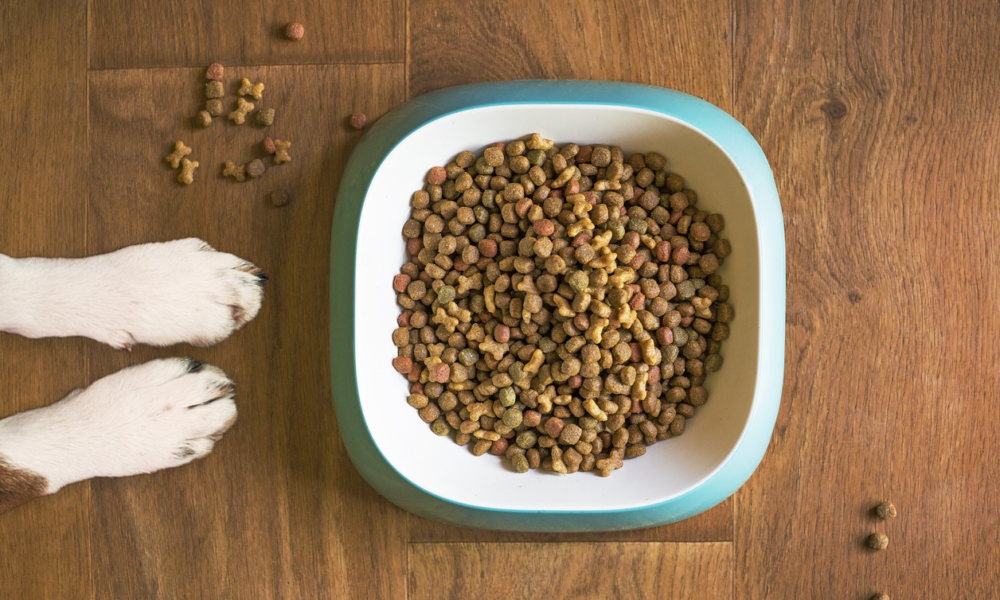Food
From Picky Eater to Foodie: How to Encourage Healthy Eating Habits in Your Dog

Every pet owner knows the frustration of trying to convince a picky eater to enjoy a balanced diet. The struggle is not just about getting your dog to eat but ensuring they consume nutritious meals that promote a healthy lifestyle.
This post will guide you through various strategies to transform your dog into a healthy eater, providing practical tips and insights to address common challenges. By the end of this article, you’ll have the tools to encourage better eating habits in your furry friend, ultimately ensuring their well-being and happiness.
Introduce Variety in Your Dog’s Diet
Dogs, like humans, can become bored with the same food every day. Rotating between different proteins, vegetables, and grains can make mealtime more exciting. Consider incorporating fresh foods like lean meats, leafy greens, and whole grains. Always ensure that new foods are safe for dogs and introduced gradually to avoid digestive upset.
Gradual Change Diets to Avoid Food Aversion
Abrupt changes to your dog’s diet can lead to food aversion or digestive issues. Instead, introduce new foods gradually. Start by mixing a small amount of the new food with their current diet and slowly increase the proportion over a week or two. This method allows your dog to adjust to the new flavors and textures without feeling overwhelmed.
Make Mealtime Fun and Engaging
Transforming mealtime into an engaging activity can help stimulate your dog’s interest in food. Use puzzle feeders or interactive toys that dispense kibble. These tools can make eating more enjoyable and mentally stimulating. Additionally, establishing a consistent feeding routine can create a sense of anticipation and regularity, making your dog more eager to eat.
Understand Your Dog’s Preferences
Observing your dog’s behavior during mealtime can provide insights into their preferences. Pay attention to the types of food they gravitate toward, whether it’s dry kibble, wet food, or raw diets. Some dogs may prefer warm food over cold, while others might enjoy a mix of textures. Catering to these preferences can make a significant difference in their willingness to eat.
Incorporate Fresh and Natural Ingredients
Fresh food often retains more nutrients than processed alternatives. Consider adding cooked vegetables, lean meats, and healthy fats like fish oil to their meals. These additions not only enhance the nutritional value but also add flavor and variety, making meals more enticing.
Avoid Table Scraps and Unhealthy Treats
While it might be tempting to share your food with your dog, table scraps and unhealthy treats can contribute to picky eating habits and nutritional imbalances. Many human foods contain ingredients that are harmful to dogs, such as onions, garlic, and excessive salt. Stick to dog-specific treats and snacks designed to provide nutritional benefits without empty calories.
Create a Calm and Positive Feeding Environment
The environment in which your dog eats can impact their willingness to eat. A calm and quiet setting, free from distractions, can help your dog focus on their food. Avoid feeding your dog in high-traffic areas or near noisy appliances. Additionally, positive reinforcement, such as praise or a gentle pat, can create a positive association with mealtime.
Monitor Portion Sizes and Frequency
Overfeeding or underfeeding can exacerbate picky eating behaviors. Monitor portion sizes to ensure your dog is receiving the right amount of food for their age, weight, and activity level. Splitting meals into smaller, more frequent portions can also help stimulate appetite. If you’re unsure about the appropriate portion size, consult with your veterinarian.
Consult a Veterinary Nutritionist
If you’re struggling to improve your dog’s eating habits, consider consulting a veterinary nutritionist. These professionals can provide tailored advice based on your dog’s specific needs and preferences. They can help you design a balanced and appealing diet plan that addresses nutritional deficiencies and encourages healthy eating habits.
Understand the Role of Supplements in a Balanced Diet
Supplements can play a role in ensuring your dog receives all the necessary nutrients. Omega-3 fatty acids, probiotics, and multivitamins can support overall health and address specific dietary gaps. However, consult with your veterinarian before adding any supplements to your dog’s diet to ensure they’re appropriate and safe.
Encourage Hydration Alongside Healthy Eating
Hydration is just as important as a balanced diet. Ensure your dog has access to fresh, clean water at all times. Some dogs might benefit from wet food or broths to increase their fluid intake. Proper hydration supports digestion, nutrient absorption, and overall health, complementing the benefits of a nutritious diet.
Maintain Consistency and Patience
Encouraging healthy eating habits in your dog requires consistency and patience. Changes won’t happen overnight, but with persistent effort and positive reinforcement, you can gradually shape your dog’s preferences. Celebrate small victories and remain committed to providing a balanced and enjoyable diet.
picky eater into a foodie is a rewarding journey that requires understanding, patience, and creativity. Remember, a balanced diet is the foundation of your dog’s health and happiness.
For personalized advice, consider consulting with a veterinarian at places like 1st Pet Veterinary Centers. Start implementing these strategies today and watch your furry friend thrive. Your dog deserves the best, and with the right approach, you can make mealtime a joyous and nourishing experience for them.